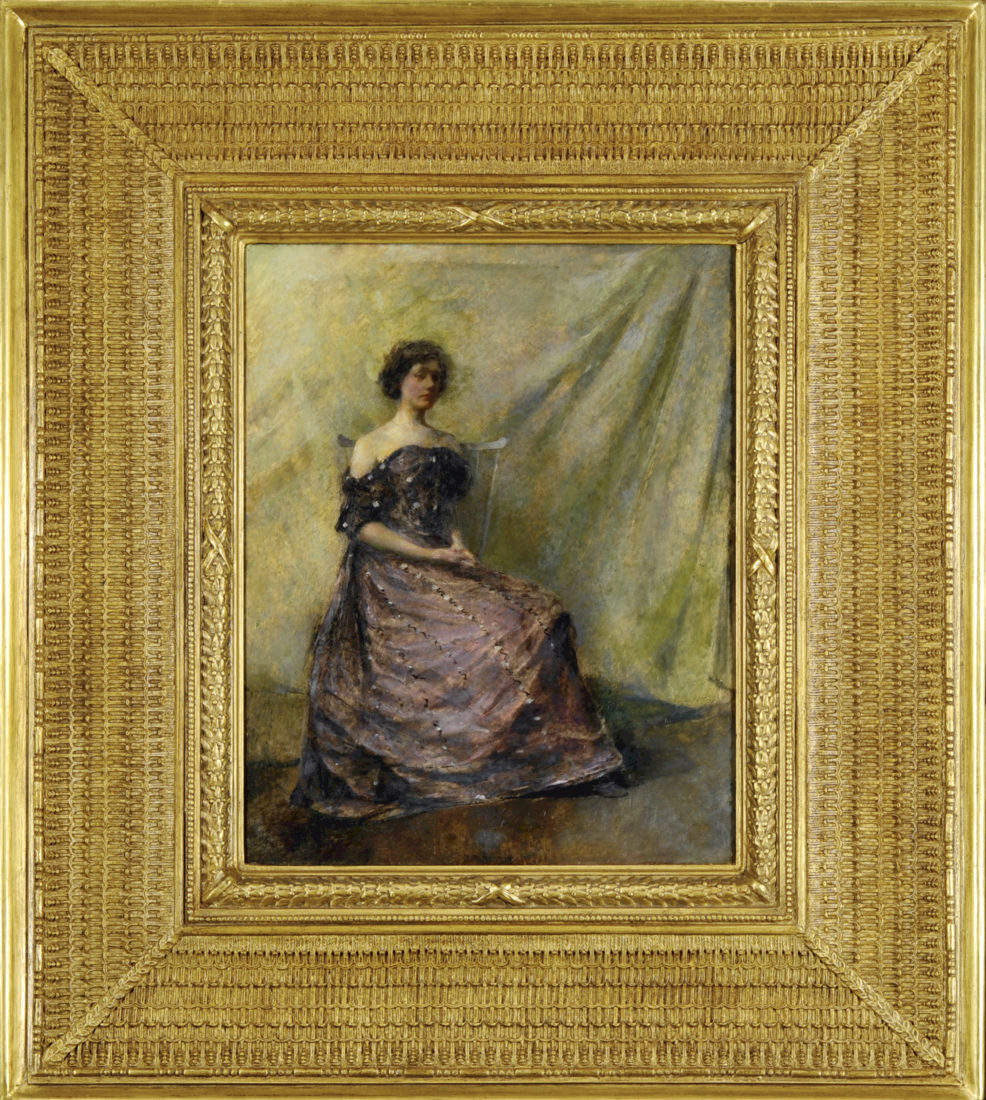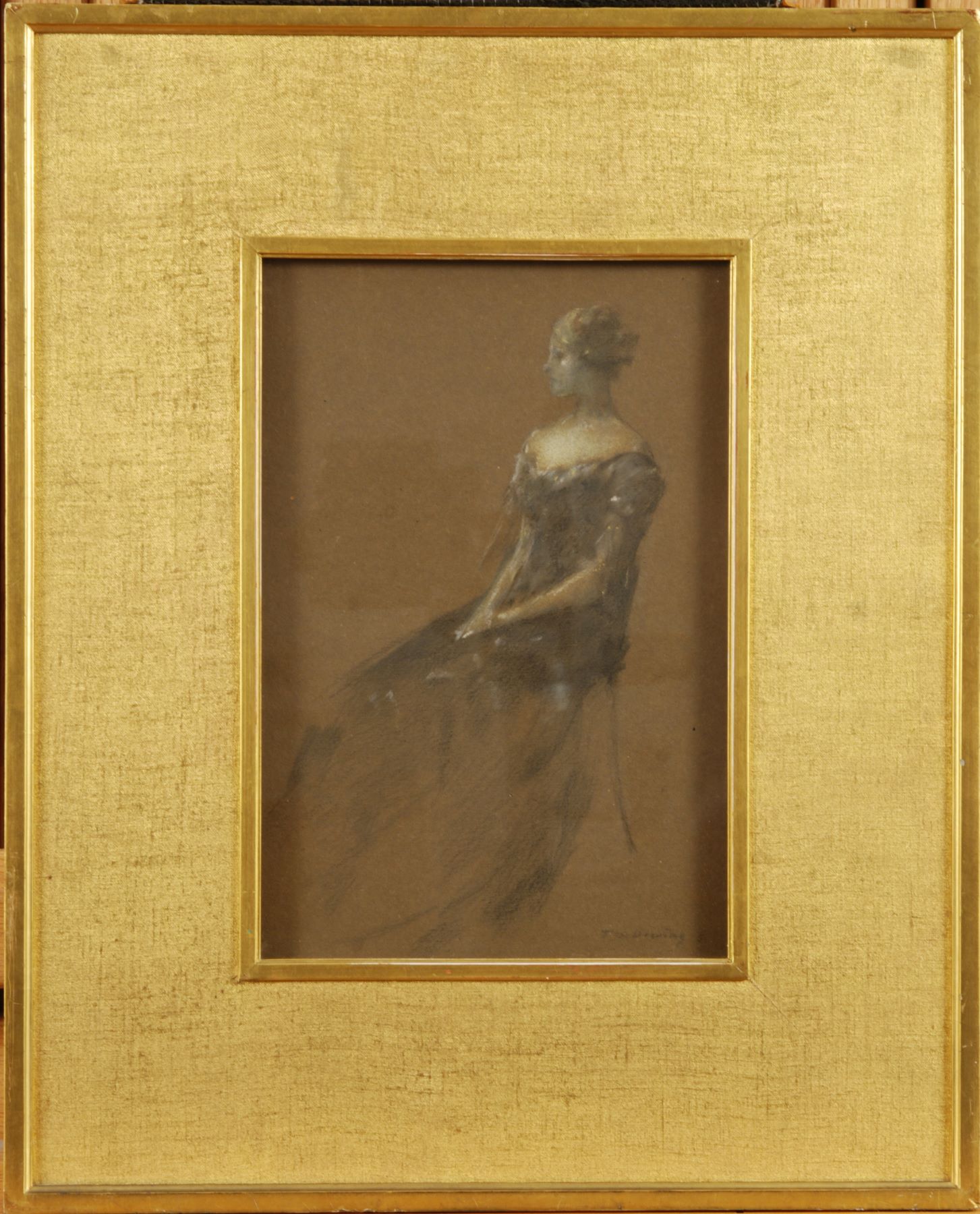In 1906, Ohio-born industrialist William Mather commissioned his estate, Gwinn, to be built on the shores of Lake Erie near Cleveland, Ohio. Years before, in search of an architect and designer for his future home, Mather had consulted his friend and mentor Charles Lang Freer, the Detroit industrialist , who as early as 1898 had suggested Mather hire the New-York architect and landscape designer Charles A Platt. Writing to Mather, Freer stated that Mather “could do no better than to call to [his] aid my friend, Mr. Charles A. Platt…”
Mather ultimately granted Platt the commission for the design of the house and the gardens, as well as the responsibility of furnishing the estate’s interior. Platt commissioned works from other artists he knew and respected who formed part of the Cornish Colony, including Louis Saint-Gaudens, Paul Manship, John Henry Twachtman, and Thomas Wilmer Dewing.
Dewing was one of Charles Lang Freer’s favorite artists and benefited from his patronage throughout his career. It was likely Dewing who had introduced Freer to Platt at his home in Corning, New Hampshire, in the 1890s. When Platt was seeking artists for Mather’s estate, Dewing was therefore a clear choice, as not only did his art appeal to Mather’s aesthetic, but once again he was following Freer’s advice on patronage. Mather quickly became a “sensitive and discerning buyer” of the artist’s paintings and drawings and acquired “an impressive body of [Dewing’s] works from 1910-1917” including the present painting, Purple and Green, which was displayed at Gwinn through Mather’s life.
Dewing’s artistic pedigree was impressive. Born in Boston, he studied with William Rimmer before moving to Paris to finish his training at the Academie Julien in Paris. With his return to the United States and a move to New York in 1880, he began teaching at the Art Students League and exhibiting at the National Academy – where he won prestigious awards and was advanced as a member. Under Freer’s patronage, he went abroad in the 1890’s to meet Whistler and again to be immersed in modern French art. However Dewing preferred his own unique style and by 1900 was back in New York with a successful (both critically and commercially) exhibition at Montross Gallery. At that point he began to work with the architect Stanford White, whose exquisite designs for frames complemented the painter’s aesthetic.






